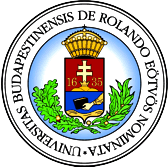
(press release)
When, why and how? - these are the primary questions what volcanologists have to answer when they evaluate the state of a volcano. However, it is a challenge to conduct such research on a volcano dormant for a long time and/or seems to be inactive. The Ciomadul (Csomád in Hungarian and Ciomatu in Romanian) volcano, located in the Eastern Carpathians, Romania, erupted last time at 32 ka.
“Everything looks quiet here, although the freshly preserved volcanic landforms and the strong CO2 and H2S emissions resemble the active volcanic areas” – says Szabolcs Harangi, head of the MTA-ELTE Volcanology Research Group in Budapest, Hungary, who has lead the extensive research on this volcano.
The research team published three papers for the last year, answering the principal questions addressed above. Their latest publication appeared in the August issue of the Journal of Volcanology and Geothermal Research. They determined the eruption ages of the youngest phase of the volcanic activity of Ciomadul and it turned out that the volcano is much younger than previously thought.
“The youngest eruption period, lasted from 56 ka to 32 ka, was particularly explosive in character compared with the older, mostly lava dome building phase. Noteworthy, it appears that this was preceded by a several ten’s ka lull of volcanism” – commented Harangi the new results.
The combined zircon (U-Th)/He and U-Th geochronology provided precise age data not only for the eruptions but also for the lifetime of the magma storage. The new zircon crystallization age data suggest prolonged existence of a low temperature (<800oC) silicic crystal mush beneath Ciomadul at least since 350 ka. This is consistent with the results of the research team published last year in the Contribution to Mineralogy and Petrology, where they used composition of amphiboles and plagioclases to constrain the pre-eruptive magma chamber condition.
“We concluded that there was a long-lasting silicic crystal mush beneath the volcano and this was effectively reactivated by injection of mantle-derived basaltic magmas raising the temperature more than 200oC. Formation of the eruptible melt-dominated magma by this process could have been fast, possibly within years or decades” – added Balázs Kiss (who just defended successfully his PhD) about the reason of the eruption trigger.
The geochronologic and petrologic data readily emphasize the important role of the long-lasting silicic crystal mush beneath the volcano. Thus, the crucial question is, whether there is still such magma body beneath Ciomadul. The research team used magnetotelluric survey and detected a low resistivity zone in a depth of 8-20 km (This results was published in the Journal of Volcanology and Geothermal Research this January). It is exactly the same depth range where the magma chamber resided during the past eruptions as shown by the geobarometric calculations and where Romanian researchers interpreted a low seismic velocity anomaly beneath the volcano.
“The geophysical data suggest that melt-bearing magma body could be still present beneath the volcano. This is consistent with our new zircon geochronologic data and implies that a silicic crystal mush could be still at the depth. Thus, we argue that the volcano could potentially reawaken in the future. We know what is necessary for such reactivation: injection of hot basaltic magma from the mantle.” – commented the present state of the volcano by Harangi.
Presently, there is no indication for an imminent eruption, but this research is going on to collect more information about the volcano and its plumbing system. The scientific results of this kind of ‘Ciomadul-trilogy’ could help to have a better understanding on the behaviour of such long-dormant volcanoes worldwide. Since there is no category for volcanoes having last eruption more than 10 ka, but considered to be potentially active, the research team suggested the term PAMS volcanoes, i.e. volcanoes with potentially active magma storage. This can be applied for Yellowstone and also for Uturuncu volcanoes, among others.
These new results will be presented also in the IUGG conference started today in Prague.
MTA-ELTE Volcanology Research Group
24th June 2015
contact: szabolcs.harangi [at] geology.elte.hu
Source of publications:
Harangi, S., Lukács, R., Schmitt, A.K., Dunkl, I., Molnár, K., Kiss, B., Seghedi, I., Novothny, Á., Molnár, M: Constraints on the timing of Quaternary volcanism and duration of magma residence at Ciomadul volcano, east-central Europe, from combined U-Th/He and U-Th zircon geochronology. Journal of Volcanology and Geothermal Research, 301, 66-80. (2015)
Harangi, Sz., Novák, A., Kiss, B., Seghedi, I., Lukács, R., Szarka, L., Wesztergom, V., Metwaly, M., Gribovszki, K.: Combined magnetotelluric and petrologic constrains for the nature of the magma storage system beneath the Late Pleistocene Ciomadul volcano (SE Carpathians). Journal of Volcanology and Geothermal Research, 290, 82-96. (2015)
Kiss B., Harangi S., Ntaflos T., Mason P.R.D., Pál-Molnár E.: Amphibole perspective to unravel pre-eruptive processes and conditions in volcanic plumbing systems beneath intermediate arc volcanoes: a case study from Ciomadul volcano (SE Carpathians). Contributions to Mineralogy and Petrology 167 (3) 986. DOI:10.1007/s00410-014-0986-6 (2014)




